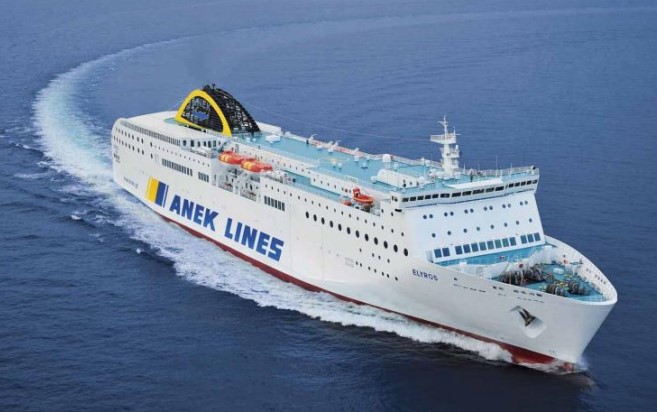

Each year, international shipping is responsible for 2.5 percent of global CO2 emissions. To react to climate change, quick and decisive action is also needed in this sector. The International Maritime Organization (IMO) wants to reduce the net greenhouse gas emissions from sea travel by at least 50 percent by 2050, with a reduction of at least 40 percent by 2030. By the end of the century, international sea travel is to be fully decarbonised. On 1 May 2021, the four year Engimmonia EU research project began; its objective is to promote the global introduction of alternative fuels, such as ammonia, and the transfer of clean energy projects that have already been proven on land to the maritime sector. As part of the project Fahrenheit GmbH, which is specialised in sustainable energy solutions, shall develop optimised cooling solutions. An adsorption chiller uses the waste heat from the ship’s engine to cool the passenger areas. Fuel is used more efficiently while green house gases and other pollution emissions are reduced.
The large majority of global greenhouse gas emissions in sea travel arise from long haul journeys. The Engimmonia research project is investigating the benefits of carbon-free fuel, such as ammonia in ships’ engines. The interaction of other clean energy technologies is also being tested. They include for example heat recovery solutions and adsorption chillers to generate electricity or to cool spaces.
Fahrenheit is the market and technology leader in the field of adsorption cooling and is focussed on developing the technology for other areas of application. “When developing concepts, we always cater for the specific needs of the respective heat source and the cooling requirement. We are convinced of the great potential in deploying adsorption chillers on board ships,” emphasises Eliza Nowak who is in charge of the project at Fahrenheit. Supported by researchers from the Institute for Advanced Energy Technologies Nicola Giordano (CNR-ITAE), Fahrenheit is to develop an adsorption chiller specifically for use on ships.

In the context of the Engimmonia research project, Fahrenheit shall develop an optimised adsorption chiller on the ferry “F/B Elyros” owned by ANEK. It shall use the waste heat from the ship’s engine to cool the passenger areas. Photo: ANEK
The first step is to identify the best material pairing of sorption and cooling agents for a prototype. “In this phase, we shall characterise different sorption agent configurations in regard to their sorption capacity, achievable cooling capacity and the thermal stability, and define the optimal combination for the application,” Eliza Nowak explains. While developing the final prototype, the CNR-ITAE shall test different configurations of adsorption modules and heat exchangers that Fahrenheit will then optimise. The final prototype will then be installed on the demo ship, a ferry belonging to the Greek shipping company ANEK, and its operation will be monitored and analysed. “We will use the demo installation on the ship as a reference project, and ultimately we want to expand new collaborations and contacts within the shipping industry,” says Eliza Nowak.
The Engimmonia consortium comprises 21 partners from 9 countries under the coordination of RINA Consulting. They include businesses from the shipping industry as well as universities and research institutes.
Engimmonia has received funding from the Horizon 2020 research and innovation programme of the European Union subject to grant agreement No. 955413.

he product portfolio of the adsorption chillers by Fahrenheit.
Photo: FAHRENHEIT GmbH
Adsorption cooling works like this:
The Fahrenheit adsorption cooling units work according to the principle of solid matter sorption, known as adsorption (from the Latin to suck (in)). Adsorption describes the enrichment of materials (gases or liquids) on the surface of a solid, the adsorber. In the adsorption process, water vapour from sorption material (silica gel or zeolite) is “sucked in” and adsorbed causing the water to vaporise and cooling energy to be generated. If the material is saturated, it is regenerated by applying heat. For the refrigerant, Fahrenheit uses pure water without synthetic refrigerants. The units allow a GWP (global warming potential) of zero to be achieved. The EU regulations on the fluorinated greenhouse gases (F-Gas regulation) are met without any problem.
Source: Fahrenheit